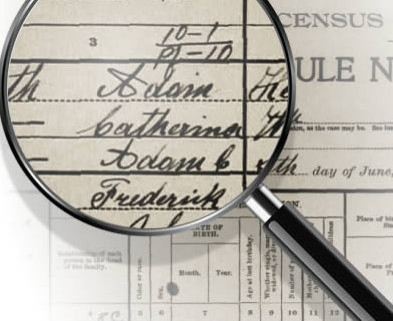1940 Census: What The National Archives Census Data Has And Why There Is Unmanageable Search Frenzy

The year 1940 was when America was just coming out of the Depression era and was not far from entering another catastrophe, the World War II.
After 72 years, the confidentiality of the 1940 Census documents expired and hence we have them out.
The documents revealed by the government Monday created major search frenzy with 22.5 million people visiting the site in just three hours of the release. By now, the website has crossed 63 million hits.
The traffic on the website was so unexpectedly high that the officials at the census records said that it was like expecting a flood and having to deal with a tsunami instead.
We were expecting a flood, but we got a tsunami. We had estimates of how much traffic was going to hit the site, and we did performance testing at several levels above that, but we were surprised by the traffic, Joe Godfrey, senior director of product and general manager for Inflection, a Silicon Valley database company, was quoted as saying by MSNBC.
The data revealed by the National Archives has some interesting facts and it illustrated how the country has changed over the past 72 years. The 1940 Census collected personal data such as address, sex, race, age and employment from the more than 132 million people living in the country at the time.
The website, created for the National Archives and Records Administration by Archives.com, is giving everyone access to this huge records free of cost.
Why is there such a huge frenzy?
The genealogical world is going crazy with all the information flow all of a sudden and this information could help one paint the picture of one's past. It is the largest collection of digital information ever released by the National Archives and the record could help one trace details about his or her ancestors, provided one has some information about them because the details are not searchable by names.
The Guardian reported that more than 21 Million people who were counted in the 1940 Census are still alive.
The treasure of information has details on the states with highest rates of college graduates, employees and, according to tecca.com, if one is searching the details of a particular individual, each entry is filled with standard census data which includes,
- Age
- Marital Status- Typically given as either S for single or M for married.
- School history- Showing the highest grade completed at the time the census was taken.
- Living situation- Lists of each home and each person's relation to the head of household.
- Employment status- Whether the person has a job, and what that job is.
- Place of birth- Either the state in which the person was born or the country, if not the United States.
- Yearly Income
The search will be easier if one knows exactly where his or her ancestors made their home in the US and would help fill in some gaps of their family tree.
A blog by Megan Smolenyak2, who is a family history advisor for Archives.com, also suggests that all the search frenzy is primarily by people looking for information about their past, their uncles and aunts.
A few of the responses that the blogger received when she asked what people were looking for are as follows:
Looking for my mom and dad who lived in Chicago. In 1930 they hadn't even met. By 1940 they had 4 little girls ages 4, 3, 2 and 1! They went on to have 4 more and I was #8! - Patricia B.
I want to see if my gg-grandfather got out of jail yet. Northern Wisconsin. brrrrr - Genevieve B.
My best friend's dad was born in '37 so I might actually find out who his parents were. - Rosanna W.
My Mom. In 1930 in her parents' household, she's listed as relative instead of daughter. Hopefully, she'll be daughter in 1940. - Jana B.
© Copyright IBTimes 2024. All rights reserved.





















